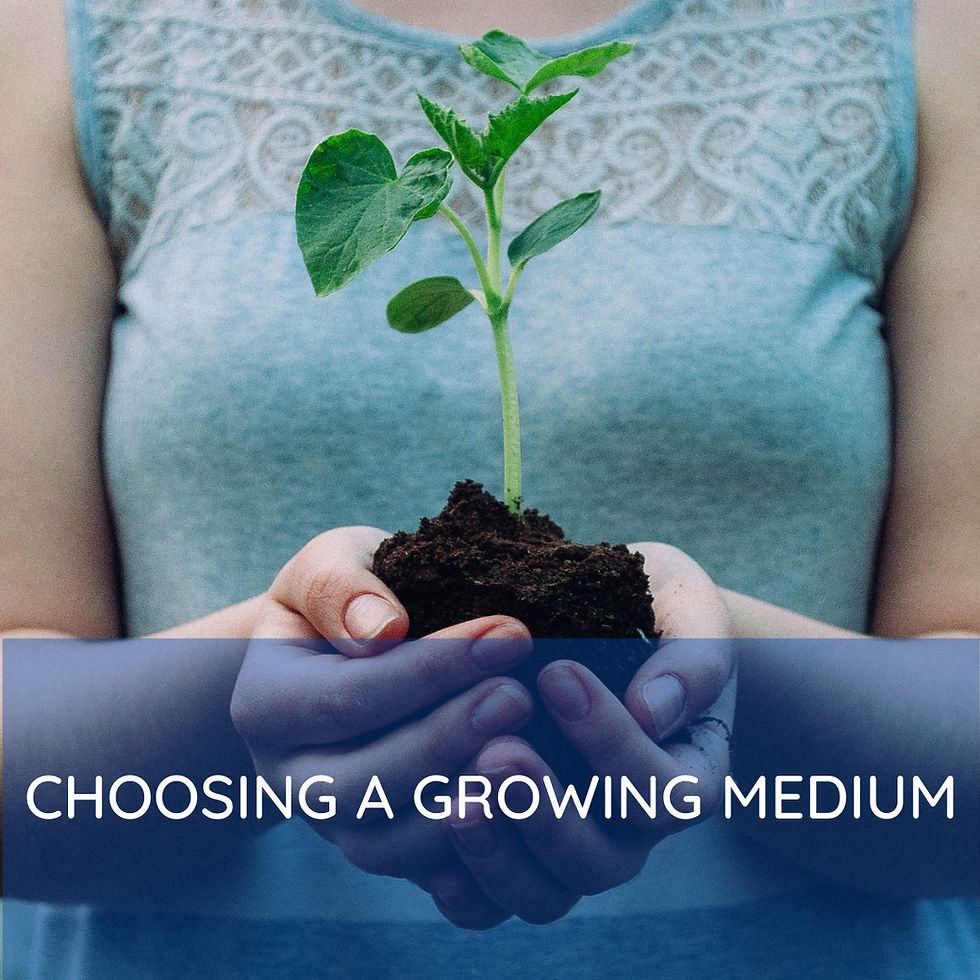Choosing an Indoor Hydroponic Gardening System
- Bimal Parmar

- Mar 3, 2021
- 2 min read

While there are a ranges of hydroponic gardening systems to choose from, I'll stick to the basic four. All these systems use water and nutrient solutions and they do not use soil. The basic elements are the same, but each system delivers these needs just a little differently.
Wicking
The wick system is the simplest system mechanically, as there are no moving parts or electrical components. Plants sit in a container directly above the water and nutrient solution reservoir. A wicking rope or strips of felt are used to connect the wicking medium to the solution. As the medium dries out, more water and nutrient solution is pulled up via the wicking rope. No pumps or moving parts are required with this technique. The wick will simply pull the moisture toward the plant as needed.
This system is not ideal for water-hungry plants like lettuce or tomatoes, as they may use up the nutrient solution faster than the wicks can supply it. This system works best for microgreens, herbs, and peppers.

Water Culture
One of the simplest and most inexpensive systems is Water Culture. The plant is placed in a basket above a reservoir filled with nutrient solution. From there, the roots hang down, completely submerged in the solution. Because the roots are constantly submerged, they’ll require aeration to prevent suffocation. Aeration can be provided with an air pump, air stones, or from a falling water system that creates air bubbles.
This system is best for growing leaf lettuce, but very few other plants grow well in this system. It is not recommended for long-lived plants like tomatoes.

Ebb and Flow System
An ebb and flow system, also called the flood and drain system, is slightly more complex in design but is extremely versatile. This system uses a water pump on a timer. It floods and then drains the root system with water and nutrients. The water reaches a height where it will soak the roots and the excess water drains through an overflow tube. When the pump shuts off at the designated time, the water drains back down to the reservoir. It stays there until the pump turns on again. This system provides the roots with alternating periods of air and oxygen then water and nutrients.

Nutrient Film Technique (NFT)
The nutrient film technique uses a water-nutrient solution that constantly flows in a loop from a reservoir through a growing tray, where plant roots hang and absorb nutrients as the solution flows by. This system makes the ebb and flow system a continuously flowing system, never taking periodic breaks. A nutrient film system works best with fast-growing, shallow-rooted plants such as lettuce, spinach, radishes, and herbs.








Comments